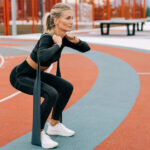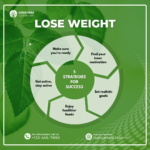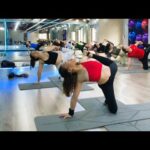Heading out the door? Read this article on the new Outside+ app available now on iOS devices for members!
Download the app.
It’s a long debated topic: Should we be practicing yoga in front of a mirror or does self-reflection, the outward kind, diminish our ability to turn inward?
“I have a fluctuating relationship with the mirror,” says Rachel Lawless, a yoga teacher in Ottawa, Canada. “Some days I appreciate the ability to check my alignment or see the uniqueness of my body in a pose reflected back at me. And some days it compounds the battle of silencing the ego.”
An obvious tool for reflection, mirrors are considered a go-to alignment tool for the physical practice of yoga by many teachers and students. Although if the intention of the practice is to transcend the limitations of the body and the mind and encourage awareness of the self, are mirrors more of a distraction than a benefit?
So how do we discern whether mirrors are an asset to our individual and collective yoga practice or a detriment? The answer is not necessarily as clear as our reflections.
What Are the Downsides of Mirrors in Yoga?
In a society that tends to see more than it feels, we may not need another realm that might encourage obsessing about what we look like instead of what’s going on within.
Mirrors Can Overemphasize the Outward Expression of a Pose
Each pose asks us to create a shape with our bodies. Yet yoga also asks students to feel into their experience and recognize the subtler sensations that are happening. Removing the distraction of outward reflection can help students, especially those newer to the practice, tune into the less obvious aspects of their experience and develop self-awareness around their breath, energy, emotions, and other less tangible sensations.
That includes becoming comfortable with the subtle body, or the unseen energetic aspect of one’s being. All of this is an act of svadhyaya, which is typically translated as “self-study” and is an essential tenet of yoga.
Mirrors Can Encourage Unhealthy Comparison
Reminders from teachers not to compare your practice to anyone else’s are common. But removing mirrors from a practice space helps limit the comparison game that is rampant in most of contemporary society, including yoga studios.
A study by the University of Minnesota surveyed female college-aged students before and after practicing yoga in rooms with and without mirrors. Researchers found that the presence of mirrors increased the likelihood of students comparing their bodies to others. Mirrors also significantly heightened the students’ anxiety around being observed or judged by their physical appearance.
Of course, in any group yoga class, the bodies in your field of vision can invite comparison. But not introducing a mirror to the practice space may help students keep their focus more on the personal and internal.
Mirrors Can Distract
Many students who have developed a home practice don’t miss mirrors at all. Longtime yoga student Deb Malave says that she switched to practicing online instead of in a studio since Covid. “I’ve come to realize my practice is more of a feeling than a look,” she says. “I listen for audio cues from the instructor on how to better a pose and I turn inward to feel the sensations more than turn outward to look. Doing yoga without mirrors has helped to deepen my practice versus the visual of looking at myself, looking at others, and losing my footing in Tree!”
Practicing without a mirror can also help us escape insecurities and self-judgment that might occur if our reflection doesn’t match how we perceive ourselves.
Mirrors Can Hide Our True Reflection
Who needs to see a reflection of their body when the practice of yoga itself is already a mirror to the self?
Brett Larkin, founder of Uplifted Yoga, likes to remind students that the practice of yoga on the mat is a microcosm of your life off the mat. The poses teach students when they need to slow down and force them to practice according to their physical, mental, and emotional needs in the moment. Isn’t that the most realistic mirror one could ask for? A mirror that accurately reflects not only physical reality but life in its entirety?
How Can Mirrors Be Beneficial in Yoga?
We are often encouraged to keep our attention on our own mat, prioritize our own practice, and focus our attention on our own experience. For some students, mirrors can facilitate this.
Mirrors Allow Us to Explore Alignment
The obvious argument for relying on mirrors during yoga is the ability to observe one’s alignment in the physical postures and develop proprioception.
Proprioception, or body awareness, develops over time. By being able to see what your pose looks like in the mirror, it can be easier to make small adjustments to your form based on verbal cues from the teacher. That visual understanding of the pose can inform the feeling the pose creates in the body.
For example, a teacher may instruct a student to lower their shoulders away from their ears to avoid creating tension in the upper back. While a student may not immediately grasp what lowering the shoulders feels like, seeing themselves lower their shoulders in a mirror, and then feeling the sensation of doing so, may create a quicker connection.
The learning doesn’t end there. “Deepened body awareness gives more tangible experiences with the postures, which can lead to more subtle awareness over time,” says Tamika Caston-Miller, who curates yoga experiences and trainings in service of collective healing and community repair. With practice, embodiment of the poses leads to embodiment of other integral yet non-physical components of the practice, explains Caston-Miller.
Mirrors Can Help Us Become More Self-Aware
“The ultimate aim of yoga is to tune inward,” says Larkin. But if you’re refining your posture, she says, the mirror can be an invaluable tool in finding safe alignment.
She gives the example of students being able to notice if their right side is more flexible from their left, or if their head is in line with the rest of their spine, or if their hips are square.“Taking the time to truly watch and study yourself in a mirror can be better than a private lesson,” she says.
Larkin asks her yoga teacher training students to purchase a full-length mirror and to photograph themselves in yoga’s key postures. “Throughout this process,” says Larkin, “you learn so much about yourself—your posture, your habits, and tendencies.” These awarenesses are difficult to derive from sensation alone. And finding safe alignment for your body allows you to experience the intended effects of the posture
Mirrors Can Help Some Students Become More Comfortable With Their Bodies
The practice of yoga is an ongoing opportunity to reconnect with the physical self. Many students marvel at how their body twists and turns, folds and arches. Although our yoga practice is not about appearances or even shapes, it is a place where we become more self aware.
The repeated experience of observing their reflection can bring acceptance for some students. For better or for worse, the presence of mirrors in a yoga setting can feel somewhat like exposure therapy, an intense intervention sometimes used in cognitive behavioral therapy that confronts an individual with something that instills anxiety and fear. Whether intentional or not, exposure to uncomfortable situations can happen during everyday experiences, including yoga.
However, the simple exposure to one’s reflection in a yoga class should not be confused with a therapeutic and supported approach to body image issues. Research suggests mirror exposure therapy is beneficial for some although not for others.
Mirrors Can Assist Teachers As Well As Students
Yoga teachers often verbally cue alignment in a pose but they might not demonstrate it. A mirror can help students experience the shape of a pose by allowing them to draw information from their own reflection and that of others. Observing others can also afford students a chance to learn how to modify a pose in a way that might also work for them.
The reflection of mirrors can be a benefit for teachers as well as students. “I happen to be dyslexic, and teaching without a mirror and mirroring a class [“mirroring” refers to facing the students and moving the opposite side of the body so it appears as if students’ movements are mirrored] was and is a huge challenge,” says teacher Chrissy Hammer of Lake Arrowhead, California. “With some commitment, I have been able to do it. However, I find my students prefer me to be facing the same direction as them with a mirrored room.” Both she and students benefit from her reflection.
So, To Mirror or Not to Mirror?
There is no right or wrong answer to the question. Each person will have a unique relationship with their practice, their physical reflection, and their emotional response to a mirror.
At Pure Yoga Ottawa, some of the yoga studios have mirrors while others do not. Co-owner Amber Stratton explains this was a design decision that has inadvertently allowed students to select what works better for them. “The great thing is,” says Stratton, “the deeper you get into your yoga practice and work on yourself, the less time you will focus on the physical and the less distracted you will become, whether there’s a mirror there or not.”
Yoga teacher and trainer Kristi Kuttner appreciates her early years of yoga and the mirrors in those studios. “My practice created a space to be much kinder and compassionate toward my reflection,” she says, referring to yoga as a “gateway to self-love.” Years later, her practice no longer includes mirrors. “I find they distract me from seeing my truest reflection—my spirit.”
3 Tips for Practicing Yoga Mindfully Near Mirrors
The only way to know whether using a mirror feels right to you is to remain aware as you practice with one and without one. Grace Secker, a psychotherapist and yoga therapist who has experience working with eating disorders and body image issues, advocates for students to practice in whatever setting feels best for them although she feels mirrors are nonessential to the practice. She offers a few suggestions for students who prefer to practice without their reflection but may find themselves practicing in a space with mirrors:
1. Keep Your Distance
Try to distance yourself from the mirror to minimize the distraction. That usually means placing your mat closer to the middle or back of the room. You might need to arrive at class a little early to secure one of these spaces.
2. Practice Your Yoga
If you glance at the mirror and self-critical thoughts arise, draw on the tools that yoga provides you: close your eyes, slow your breath, and bring your awareness back to what the teacher is saying and how the pose is feeling in your body. Repeat as needed during class.
3. Find As Much Ease As You Can In Your Reflection
Although yoga is not about appearances and clothing is not a solution to body image issues, consider wearing something that is both easy to move in and that is pleasing to you. If you do glance in the mirror, this can help you from becoming overly critical of yourself.
About Our Contributor
Taylor Lorenz is a travel and yoga writer, yoga teacher, and self-acceptance advocate from Ottawa, Canada. Her writing and yoga classes teach that travel is a form of expansion instead of escapism and that self-acceptance is the cure to many of life’s woes. She aims to help others feel comfortable and confident in their bodies and their dreams so they can live their lives freely. Follow her on Instagram and YouTube.
This content was originally published here.


















